Demonstrating and upscaling Ecological Mangrove Restoration in North Kalimantan, Indonesia
by Wetlands International
The To plant or not to Plant initiative by Wetlands International works to rehabilitate mangroves by applying best practices in mangrove restoration, and by enabling NGOs, government agencies and communities to effectively upscale their work. Indonesia is one of the 4 countries where we demonstrate Ecological Mangrove Restoration (EMR) on the ground, focused on natural mangrove regeneration, while we support others to embrace this approach and move away from traditional mass planting.
In Indonesia, mangrove restoration still largely relies on planting practices, which presents challenges for achieving sustainable restoration. While natural regeneration takes longer than planting, the success rate is a lot higher and results in more resilient mangrove forests that deliver more benefits for biodiversity, climate and people. Despite the recognized benefits of EMR, its widespread adoption remains limited. To address this, this project is actively engaging with agencies, practitioners, and local communities involved in mangrove restoration activities. Additionally, the team is providing advisory support to the government to enhance policies related to mangrove management.
Building on the demonstration site in Demak recognised as UN Restoration Flagship Project, and other restoration projects, this project selected and implemented Ecological Mangrove Restoration in Liagu Village, in North Kalimantan. In this 14 hectares pilot site, best practice mangrove restoration is demonstrated in abandoned fishponds where mangroves have not naturally regenerated. The aim is to inspire replication and upscaling in other areas with similar situations on North and East Kalimantan.
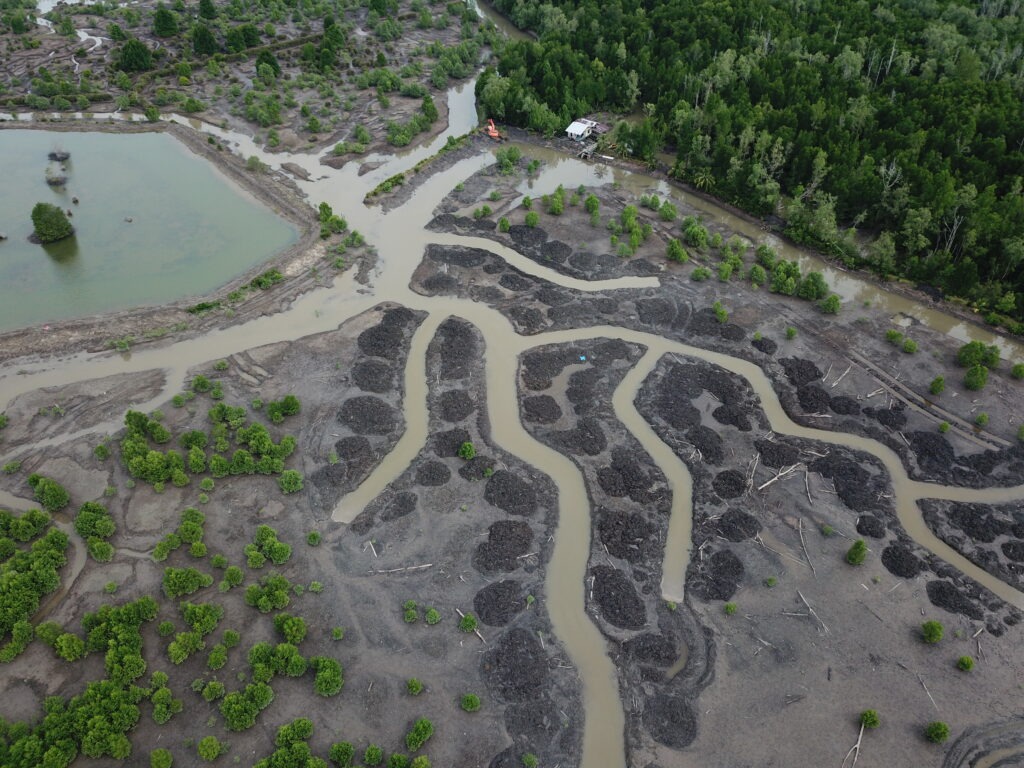
Zigzag pattern of hydrological channels in Liagu @Wetlands International Indonesia
In the demonstration site in Liagu, the hydrology had been disturbed as a result of 15 years of aquaculture activities. The absence of appropriate hydrological channels and the high elevation compared to other locations has prevented mangrove propagules and seeds from nearby healthy mangroves to reach the abandoned ponds. To restore this, a zigzag pattern of channels was created that mimics the natural flow pattern. In addition, propagules were spread in hydrological channel pathways, to accelerate the natural regeneration process and to introduce some mangrove species other than pioneering species.
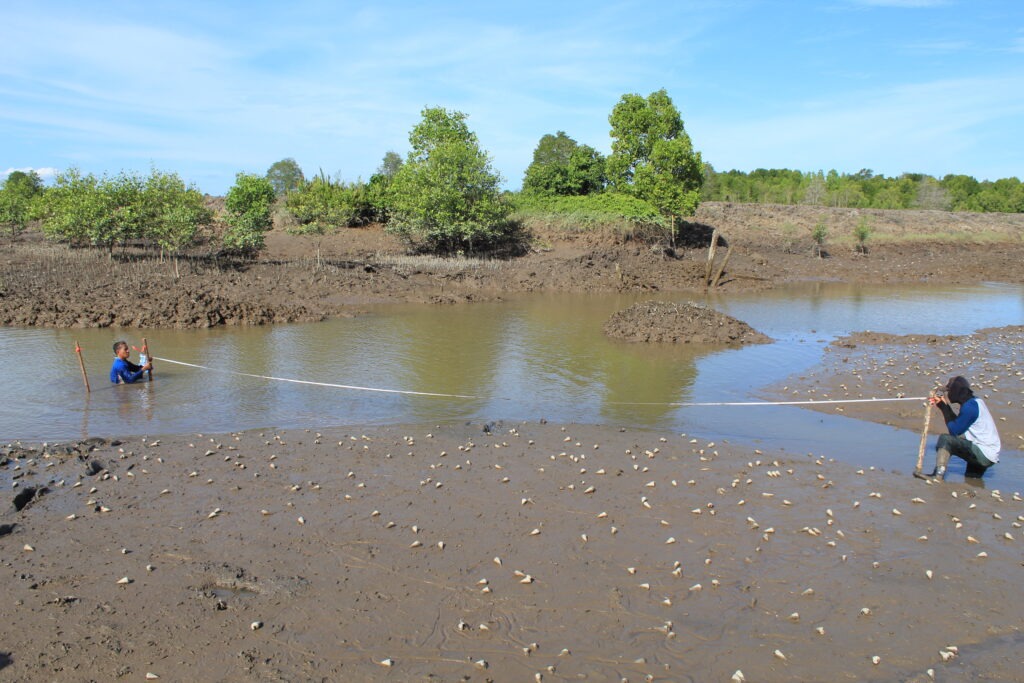
Repair of hydrological channels @Wetlands International Indonesia
Monitoring has already revealed notable changes in land elevation and natural mangrove growth at the site, but full restoration takes time. While natural regeneration takes longer than planting, trees that naturally appear will be able to survive in the suitable conditions that were created. In contrast, planting tends to use a single species in often unsuitable biophysical conditions for the species used. These mangroves are also more susceptible to pests and diseases.
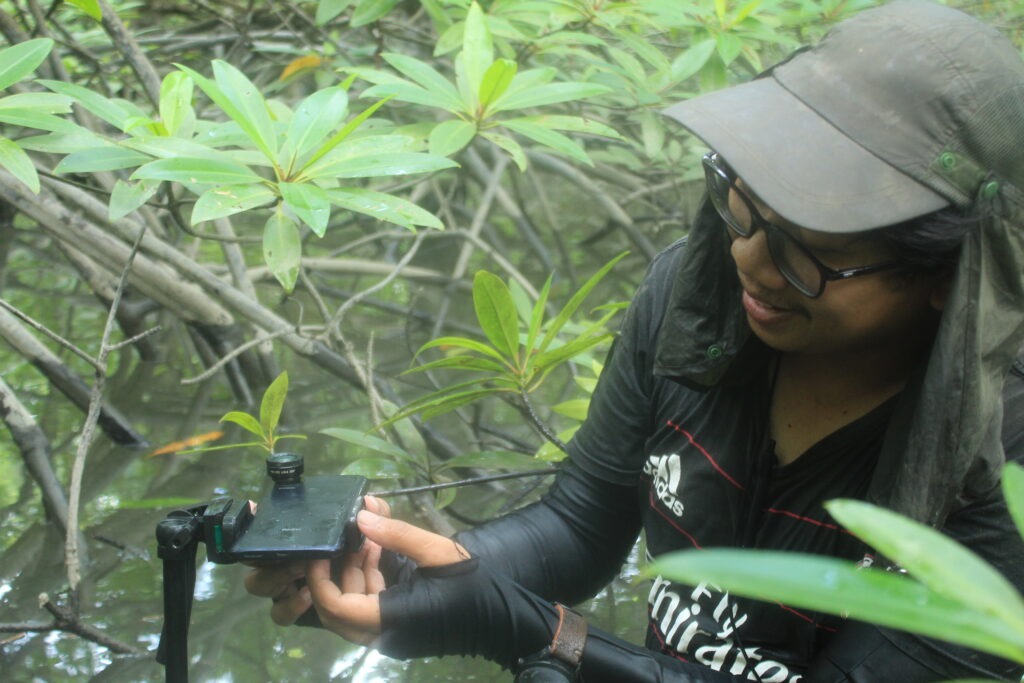
Conduction of baseline assessment activities in Liagu @Wetlands International Indonesia
Local communities and pond owners are involved throughout all stages of the program. Guided by field facilitators, they are conducting survey activities in preliminary and baseline assessments, planning, design and implementation activities as well as monitoring of the restoration process. This engagement fosters a sense of ownership and commitment to the long-term maintenance of restoration locations. Also the Forest Management Unit is closely engaged and trained.
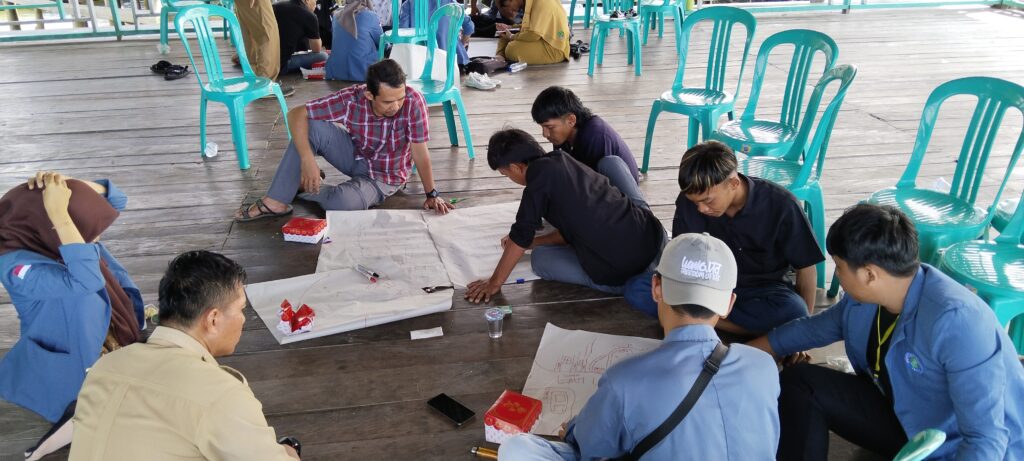
Joint planning and design with the Liagu village community @Wetlands International Indonesia
Wetlands International Indonesia will upscale ecological mangrove restoration in 33,000 ha of degraded mangrove in North and East Kalimantan, in a joint programme (NASCLIM) with the Global Green Growth Institute (GGGI) funded by Global Affairs Canada (GAC). In addition, through support of the Food Planet Prize Award Wetlands International will restore another 10 hectares of degraded mangrove and conserve 15 ha of existing mangroves in North Kalimantan.
Capacity building and policy uptake of best practices is supported through:
Support for uptake of Ecological Mangrove Restoration as best practice in Indonesia’s national mangrove strategy, technical guidelines and government investments, in collaboration with partners from the Global Mangrove Alliance Indonesia.
Site visits for policy makers and experts organisations to our mangrove restoration demonstration sites in Demak and Banten (Central Java) to share lessons and inspire stakeholders about ecological mangrove rehabilitation and environmentally friendly aquaculture.
Training of so far 262 people on Community based Ecological Mangrove restoration (CBEMR), reaching various stakeholders, including the national and local governments, universities, the private sector, NGOs, and communities, leading to interest from multiple parties in adopting similar practices.
EMR and Associated Mangrove Aquaculture (AMA) were recognised by the World Bank and Indonesia’s Peatland and Mangrove Restoration Agency (BRGM) as critical approaches to successfully achieving mangrove restoration in Indonesia, which should influence investment by the Government of Indonesia toward EMR-based mangrove restoration, contributing to our goal to influence a phasing out of mass planting initiatives. Recommendations for using EMR can now be found in various government plans and programmes.
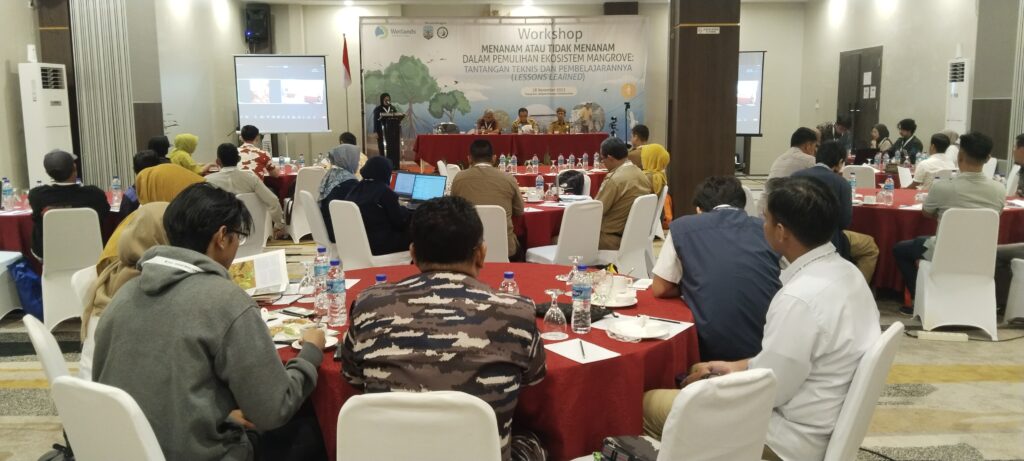
To plant or not to Plant workshop in North Kalimantan, sharing lessons learnt and recommendations to stakeholders @Wetlands International Indonesia